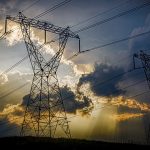Smart Grid Vulnerabilities Nobody is Talking About

Image courtesy of Jernej Furman under Attribution 2.0 Generic License, resized to 700 x 391 pixels.
There has been a lot of buzz over the past few years regarding so-called smart grids, but few have focused on the numerous smart grid vulnerabilities that could conspire to cripple utility operations. Obviously, this is an important consideration for emergency preparedness professionals, because anything that increases overall risk to the U.S. power grid is naturally likely to result in more outages. Ugh!
What are the Various Hidden Smart Grid Vulnerabilities?
Simply put, smart grids leverage the cloud, which is problematic because the cloud consists of a network of data centers. Therefore, there are by definition more potential backdoors for malicious actors to try and exploit to gain access to the system. Compare this to the relatively low-tech nature of traditional utility operations, and you can see the heightened risk.
Of course, like anything, smart grids have pros and cons. The security issue is a huge downside, but on the plus side, the advanced grid technology enhances the ability to integrate renewable energy sources into the overall grid. It could also prove to be more reliable, and help facilitate 2-way communication between the meter and the utility.
Unfortunately, even low-tech hacking methods may prove to be more impactful when launched at a smart grid. Things like blowing up infrastructure could have significant downstream ramifications because everything is connected or networked together. Another layer of risk is if the data centers that make up the cloud are taken offline. Again, it’s all connected.
If this all sounds doom and gloom, rest assured that it is somewhat speculative and not necessarily indicative of how things will actually pan out in reality. That said, it’s impossible to argue that there aren’t a lot of smart grid vulnerabilities that, if exploited, could more than offset the benefits of such a system. Only time will tell whether this will present yet another challenge for utility emergency planning.



